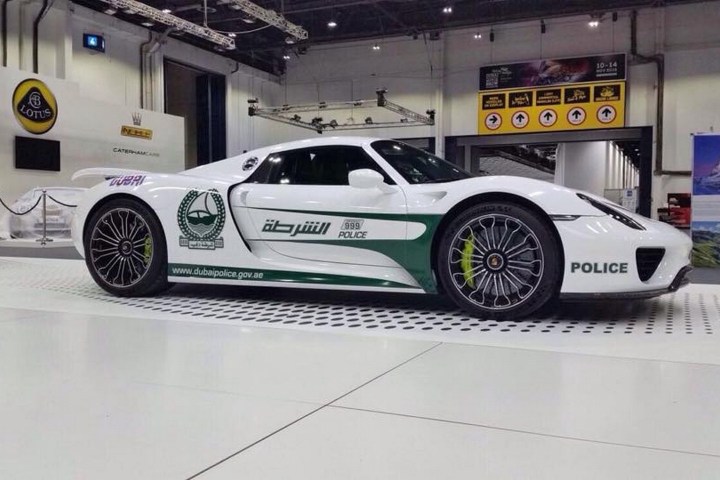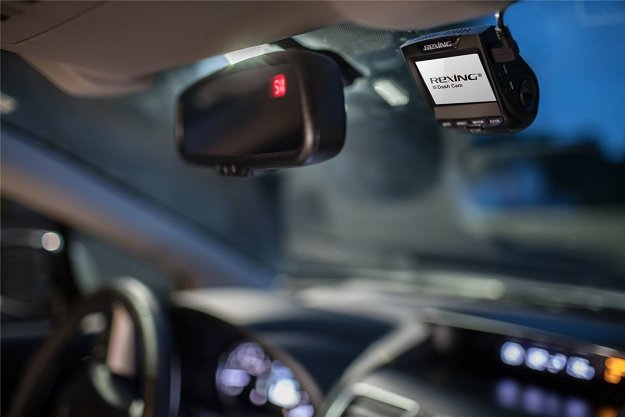
It was the Porsche that donned Dubai’s green-and-white police livery, which has become a familiar site to Internet-trawling car fans. The 918 was revealed by the Dubai Police on Twitter. The green streaks running down the sides are a nice touch, referencing the graphics Porsche itself applied to some customer cars.
As with the other cars in the Dubai Police fleet, the 918 Spyder won’t do much actual police work. It will be used primarily for promotional purposes, helping to put an appealing face on both the police force and Dubai itself. The storm of social media posts that seems to follow every one of these cars certainly can’t hurt a municipal organization, or a city.
The 918 is one of the most impressive cars in an already-impressive collection. Other supercar highlights include the Bugatti Veyron, the Ferrari FF, and the Lamborghini Aventador. There are also some more “normal” sports cars, like a Ford Mustang, Chevrolet Camaro, and Lexus RC F, plus a BMW i8 plug-in hybrid.
It’s not all about sleek performance cars, though. The Dubai Police also rosters a Brabus-tuned Mercedes-Benz G-Class, and a tiny Renault Twizy electric car. Pretty much anything that can get attention seems to be fair game.
The success of the Dubai Police fleet as a promotional tool has led to other police forces around the world enlisting some exotic cars of their own. In Abu Dhabi, the local police dressed up a Rolls-Royce Phantom and W Motors Lykan Hypersport in its red-and-white livery, and a unit of the Australian New South Wales Police Force uses an Audi RS 4 Avant for public relations.
In the U.S., the LAPD previously borrowed a Lamborghini Gallardo for a charity event. More recently, it took delivery of BMW i3 and Tesla Model S P85D loaners, raising the profile of its efforts to add more electric cars to its fleet.


